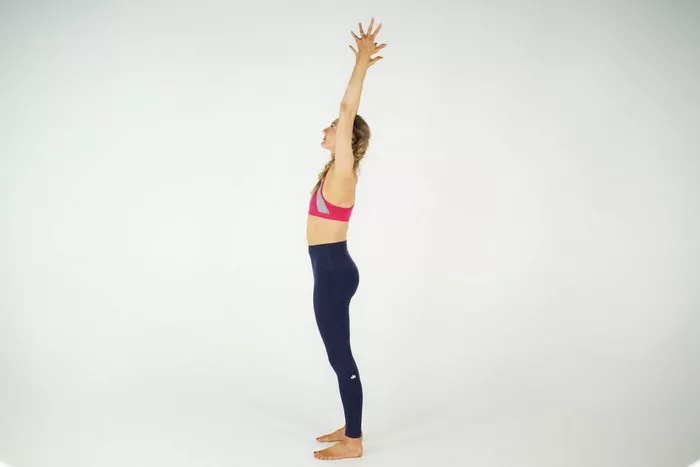In the world of fitness, two of the most popular activities that people turn to for weight loss are yoga and walking. Both offer numerous health benefits and have been practiced for centuries in different parts of the world. While each of these exercises has its unique approach and set of advantages, the question remains: which one is better for weight loss? In this article, we will compare yoga and walking in terms of their effectiveness for weight loss, examine their individual benefits, and provide insights into which might be more suited to your goals.
Understanding the Basics: Yoga and Walking
Before we delve into a detailed comparison, it’s important to understand what yoga and walking are, and what each activity involves.
What is Yoga?
Yoga is an ancient practice that originated in India thousands of years ago. It combines physical postures, breathing exercises, meditation, and a philosophy of mindful living. There are various styles of yoga, ranging from the gentle and restorative to the more physically demanding types. The physical postures, or asanas, aim to improve flexibility, strength, and balance, while the breathing techniques (pranayama) help in controlling the breath, enhancing concentration, and calming the mind.
Yoga can be broadly categorized into two types:
Hatha Yoga: Focuses on physical postures and is generally slower-paced, making it a great choice for beginners.
Vinyasa Yoga: A more dynamic form of yoga that involves flowing sequences of movements synchronized with the breath.
Ashtanga Yoga: A vigorous, fast-paced style of yoga that follows a set sequence of postures performed in a specific order.
While yoga may not burn as many calories as some high-intensity exercises, it has a variety of benefits that can contribute to weight loss over time.
What is Walking?
Walking is a low-impact, weight-bearing aerobic exercise that involves moving at a steady pace on foot. It’s a simple, natural activity that requires no special equipment or training. Walking can be done at varying intensities, from a leisurely stroll to a brisk walk. The faster and longer the walk, the more calories you burn. Walking is an excellent cardiovascular workout that improves circulation, boosts metabolism, and strengthens muscles, especially in the lower body.
Walking is often considered one of the easiest and most accessible forms of exercise, making it a popular choice for people of all ages and fitness levels. In addition to its physical benefits, walking is also great for mental health, helping to reduce stress and improve mood.
Weight Loss and the Role of Exercise
When it comes to weight loss, creating a calorie deficit is key. This means that the number of calories you burn through physical activity should exceed the number of calories you consume through food and drink. Both yoga and walking can contribute to this process, but the manner in which they do so differs.
How Yoga Contributes to Weight Loss
Yoga, while often associated with mindfulness, relaxation, and flexibility, also offers significant benefits when it comes to weight loss. However, its effects may not be as immediately noticeable as those from more intense exercises.
Calorie Burning: Although yoga is generally a low-intensity exercise, some forms—such as Vinyasa or Ashtanga yoga—can be more physically demanding and help you burn a moderate number of calories. On average, you can expect to burn between 200 to 400 calories per hour during an intense yoga session, depending on your weight, the style of yoga, and the intensity of your practice.
Building Muscle: Certain yoga poses, especially those that require you to hold your body weight (like plank poses or warrior poses), can help build muscle. Muscle mass increases your basal metabolic rate (BMR), meaning you burn more calories even when you’re at rest.
Improved Digestion: Yoga includes a variety of postures that stimulate the digestive system, improving gut health and metabolism. Regular yoga practice can help prevent bloating, reduce constipation, and promote regular bowel movements, which can contribute to a feeling of lightness and overall well-being.
Stress Reduction: Yoga has a strong emphasis on mindfulness, breath control, and relaxation. Studies have shown that stress can lead to weight gain, especially abdominal fat, due to the release of cortisol (the stress hormone). By reducing stress, yoga can help lower cortisol levels and promote a healthier, more balanced approach to eating and living.
Mindful Eating: One of the indirect benefits of yoga is the practice of mindfulness, which extends to how you approach food. By cultivating greater awareness of your body’s hunger cues and emotional triggers, yoga can help you make healthier food choices and avoid overeating.
Long-Term Benefits: Weight loss through yoga is often more gradual and sustainable. It helps to create a balanced, holistic approach to well-being that includes not only physical health but also mental and emotional health. This long-term approach is beneficial for maintaining a healthy weight once it is lost.
How Walking Contributes to Weight Loss
Walking, on the other hand, is a more direct and straightforward way to burn calories, which is why it is often recommended for weight loss. Unlike yoga, walking is a cardiovascular exercise that raises your heart rate and increases the number of calories you burn.
Calorie Burning: Walking at a brisk pace (3-4 miles per hour) can burn anywhere between 200 to 400 calories per hour, depending on factors such as your speed, terrain, and body weight. The more intense the walk, the more calories you will burn. Walking for 30 minutes a day can contribute to a significant calorie deficit over time.
Improved Metabolism: Walking improves circulation and helps regulate the metabolism. It’s a great way to enhance fat burning, especially when combined with a balanced diet.
Fat Loss: Walking is particularly effective for targeting visceral fat—the fat that accumulates around your internal organs. This type of fat is linked to many health issues, including heart disease and diabetes. Walking regularly can help reduce this fat, contributing to overall weight loss.
Low Impact, High Reward: Because walking is a low-impact activity, it’s easy on the joints and suitable for people with knee pain, arthritis, or other mobility issues. This makes walking an accessible and sustainable exercise for many individuals, particularly those who may struggle with more intense forms of exercise.
Mental Health Benefits: Walking outdoors, especially in nature, can have significant mental health benefits. It reduces stress, improves mood, and helps clear the mind. A positive mindset can make it easier to stick with a weight loss program, as mental well-being is a key factor in maintaining a healthy lifestyle.
Sustainability: Walking is simple, inexpensive, and easy to incorporate into daily life. Whether it’s taking a stroll after dinner or walking to work, it’s a sustainable exercise that doesn’t require a gym membership or fancy equipment.
Comparing Yoga and Walking for Weight Loss
Now that we’ve explored the benefits of both yoga and walking, let’s compare them in terms of weight loss effectiveness.
Intensity and Calorie Burning
Walking: Walking is generally more effective at burning calories than yoga, especially if you walk briskly or for longer periods. It is a cardiovascular exercise that raises your heart rate and directly targets fat burning.
Yoga: While yoga can burn calories, it typically doesn’t burn as many calories as walking. However, certain styles of yoga, such as Vinyasa and Ashtanga, are more dynamic and can offer a higher intensity workout.
Duration and Accessibility
Walking: Walking is easy to incorporate into daily life and doesn’t require much time or special skills. You can walk for as little as 30 minutes a day and still see results. Plus, it doesn’t require a special location or equipment.
Yoga: Yoga requires a designated time and space, and the benefits for weight loss are more gradual. However, yoga provides a more holistic approach to health, improving flexibility, balance, and strength.
Mental and Emotional Well-Being
Walking: Walking, especially outdoors, offers significant mental health benefits. It can clear the mind, reduce anxiety, and improve mood.
Yoga: Yoga emphasizes mindfulness, breathing, and stress reduction, which can contribute to better emotional regulation and more conscious decision-making when it comes to food and exercise.
Long-Term Sustainability
Walking: Walking is easy to maintain over the long term and doesn’t require a lot of motivation. It’s a low-impact, accessible exercise that can be done anywhere.
Yoga: Yoga is also sustainable, especially when practiced regularly. Its combination of physical and mental benefits can make it a lifelong practice, promoting a balanced approach to weight loss and health.
Conclusion
Ultimately, the choice between yoga and walking for weight loss depends on your personal preferences, goals, and fitness level.
If you are looking for a straightforward, calorie-burning exercise that can help you lose weight quickly, walking might be the better option. It is a more intense cardiovascular workout that directly targets fat burning and is easy to incorporate into your daily routine.
If you prefer a more holistic approach that combines physical exercise with mental and emotional benefits, yoga could be the better choice. While it may not burn as many calories as walking, it helps to improve muscle tone, reduce stress, and encourage a mindful approach to eating and living.
In fact, combining both activities could offer the best of both worlds—walking for fat burning and cardiovascular health, and yoga for flexibility, strength, and stress reduction. Ultimately, the best exercise for weight loss is one that you enjoy and can stick with long-term. The key to success is consistency, so choose the activity that feels right for you and incorporate it into your daily life.
Related Topics:













